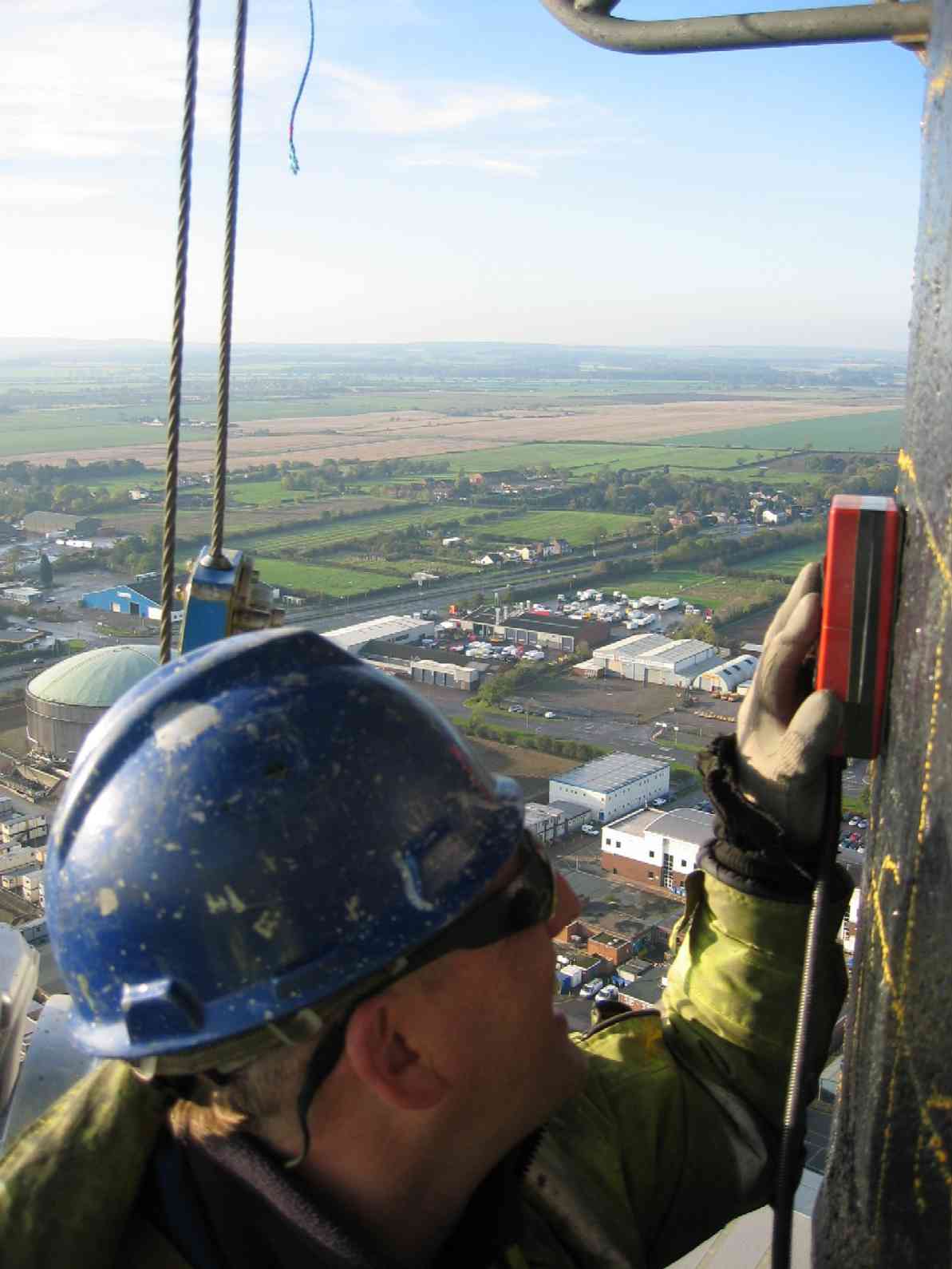|
GROUND PENETRATING RADAR GPR SURVEYS
GEOPHYSICS
Contact Us |
Ground
Penetrating Radar GPR Surveys:-
Ground Penetrating Radar, Ground Probing Radar, GPR, Impulse Radar and Surface Penetrating Radar
are common names for the ground radar geophysical survey technique. It is a non-destructive geophysical survey method which can be used to
obtain almost continuous subsurface geophysical data
or obtain non-destructive testing, imaging and mapping data from a concrete or masonary structure including rebar mapping.
Ground Penetrating Radar surveys often require only a
single geophysicist and the system can be hand held, trolley mounted or towed by a vehicle.
A ground penetrating radar (GPR) unit consists of a power supply, a radar data processing unit and a
variety of antennae, depending upon the depth and resolution
required.
Bentham Geoconsulting have invested in the latest GSSI SIR 3000
ground penetrating radar system and Radan radar processing software from the USA.
Our
work has included imaging concrete thickness and reinforcement mapping in concrete floor slabs, locating tendon ducts in concrete bridge decks and slabs, locating underground tanks used as pollution interceptors,
testing the condition of reinforced concrete chimney stacks at a UK petroleum refinery and
locating wash-out under a quayside at a northern UK port.
| Ground Penetrating Radar
operates by propagating electromagnetic pulses into the ground or
structure. Where there is a change in the type or proportions of material then some of the
radar energy is reflected back to the receiving antenna. The
processing unit samples the return radar pulse and depicts the degree of
reflection using a predefined colour chart. As the ground penetrating radar system is moved
along the survey line a 2-D image is built up showing the changes in
the reflected energy. A survey normally consists of a grid of survey
lines so that a full site or area interpretation is possible and the
extent of sub-surface material changes becomes apparent.
The photograph to the right
shows a ground penetrating radar survey being undertaken on a concrete chimney from a
cradle at 112m height. |
 |
To a skilled
geophysicist ground penetrating radar survey data can be interpreted in-terms of engineering
or environmental information. After processing, the anomaly patterns are usually shown on an image map
and can be used to plan intrusive investigations or simply
as a means to avoid existing structural elements during
refurbishment.
The image below shows
processed ground penetrating radar data obtained over a 1m x 1m test panel as a requirement for mapping the
configuration of rebar reinforcement within a concrete chimney stack at a UK refinery.
Applications:-
Concrete chimney inspection
Chimney flu location
Utility detection and on site mark out surveys
Concrete slab thickness imaging and rebar reinforcement mapping
Location of conduits and cable trenches in concrete slabs
Post tensioned tendon duct location in concrete bridges and decks
Retaining wall surveys
Location of shafts, voids, air raid shelters, pipes, utilities, services
Foundation and pile cap beam mapping
Pavement condition assessment
Tunnel lining inspections - lining defects and voids
Forensics
Geological surveys
Contaminated Land and Pollution surveys
Badger sett mapping
Masonary arch bridge assessment
|